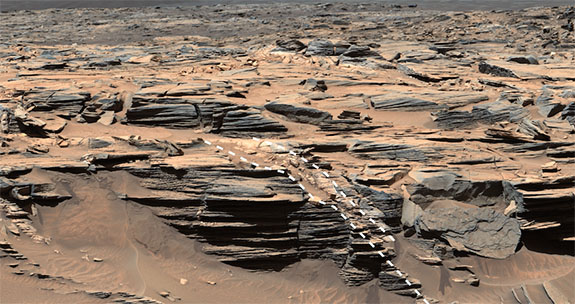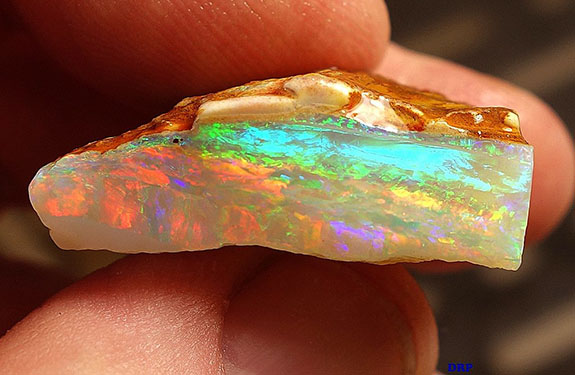A research team analyzing archived data from NASA’s Curiosity rover have identified fractures and "halo" networks along the Martian landscape that are likely rich in opal. Since the iridescent gem is formed from water and silica, the findings provide additional evidence that the Red Planet had a watery past that could have supported microbial life.
Back in 2012, NASA sent the Curiosity rover to Mars to explore Gale Crater, a 96-mile-wide impact basin with a massive, layered mountain in the middle. The mission was supposed to last for three years, but was extended indefinitely as Curiosity continued to deliver invaluable information.
Researchers from Arizona State University have dug into the Curiosity rover's vast archive of images and found that these opal-rich "halos" of lighter-colored rock weren't isolated. Rather, they appear to exist all over Gale Crater. Curiosity's onboard neutron spectrometer was able to independently verify that fracture halos contained water-rich opal.
"Our new analysis of archival data showed striking similarity between all of the fracture halos we've observed much later in the mission," noted lead study author Travis Gabriel, who is currently a research physicist at the U.S. Geological Survey. "Seeing that these fracture networks were so widespread and likely chock-full of opal was incredible."
The researchers also noted that the vast subsurface fracture networks would have provided water-rich and radiation-shielded conditions that were potentially more habitable than those on the surface, where temperatures can descend to minus 100 degrees Fahrenheit at night and reach barely 30 degrees Fahrenheit during the day.
The findings were recently published in the Journal of Geophysical Research: Planets.
Looking forward, the presence of so much opal on the surface of Mars could have implications for space travelers because the structure of October's birthstone contains between 3% and 20% water.
Theoretically, when the opal is ground down and heated, the water can be extracted. The research team estimated that a 1-meter-long specimen could contain up to 5.7 liters (1.5 gallons) of water in the top 0.3 meters from the surface.
In February of 2021, NASA placed a second rover, Perseverance, on the surface of Mars. That research vehicle is currently searching for signs of life in the Jezero Crater, which is also suspected to be rich in opal-like material.
Here on Earth, fine opals are sourced mainly in Australia. Scientists believe that between 100 million and 97 million years ago, Australia’s vast inland sea, which was populated by marine dinosaurs, began retreating. As the sea regressed, a rare episode of acidic weather was taking place, exposing pyrite minerals and releasing sulphuric acid. As the surface of the basin dried further and cracked, silica-rich gel became trapped in the veins of the rock. Over time, the silica solidified to form opals.
In precious opal, the silica spheres are uniform in size and are stacked into an orderly arrangement, which gives the structure the ability to break visible white light into separate colors.
Credits: Curiosity rover image by NASA/JPL-Caltech, Public domain, via Wikimedia Commons. Martian terrain image by Malin Space Science Systems/NASA/JPL-Caltech. Opal image by Dpulitzer, CC BY-SA 3.0, via Wikimedia Commons.



No comments:
Post a Comment